InterviewSolution
This section includes InterviewSolutions, each offering curated multiple-choice questions to sharpen your knowledge and support exam preparation. Choose a topic below to get started.
| 90301. |
A conductance cell has platinum electrodes, each with 5 cm^(2) area and separated by 0.5 cm distance. What is the cell constant? |
|
Answer» Solution :GIVEN : Length = 0.5 cm Area = 5 `cm^(2)` Formula : CELL CONSTANT = `l/a` Solution : Cell constant = `(0.5cm)/(5cm^(2))` `""=0.1 cm^(-1)` Cell constant = `0.1 cm^(-1)`. |
|
| 90302. |
A condensation polymer among the following polymers is |
|
Answer» teflon |
|
| 90303. |
A condensation as well as co-polymer is : |
|
Answer» PVC |
|
| 90304. |
A concentration of 1 ppm means that |
|
Answer» 1 kg of solution CONTAINS 1 MG of solute |
|
| 90305. |
(A): Conc.H_(2)SO_(4) reacts with KCl to give Cl_(2) gas (R): HCI cannot be oxidised by conc.H_(2)SO_(4) |
|
Answer» Both (A) and (R ) are TRUE and (R ) is the correct explanation of (A) |
|
| 90306. |
A concentration cell Pt|H_2(g)|HCl(aq)||H_2SO_(4)(aq)|H_2(g)|Pt is constructed using equal concentration of acids and equal number of moles of H_2 gas in both the compartments at the same temperature.If volume of H_2 gas at the anodic compartment is 1/9 times the volume of H_2 gas at cathodic compartment Which of the following is/are correct for the given cell (log 2=0.3, log 3=0.48)(2.303 RT)/F=0.06 V |
|
Answer» Pressure of `H_2` gas in both the cell compartment are equal Anodic reaction `1/2 H_2 toH^+ +e` Cathodic reaction `H^+ +e to 1/2 H^2` `underset(("anode"))(1/2H_2)+underset(("cathode"))(H^+)tounderset(("cathode"))(1/2H_2)+underset(("anode"))(H^+)` `E_(cell)^@=0` `E_(cell)=E_(cell)^@-0.06/1"log"(sqrt((P_(H_2))_("cathode"))xx[H^+]_("anode"))/(sqrt((P_(H_2))_("anode"))xx[H^+]_("cathode"))` `E_(cell)=-0.06 "log"(sqrt1/9xxC/(2C))=-0.06 "log" 1/(2xx3)=0.06 ("log" 2+ log 3)=0.06(0.3+0.48)=0.0468` volt |
|
| 90307. |
A concentrated solution of urea gives a white preciritatc with: |
|
Answer» `HNO_(3)`(CONC.) |
|
| 90308. |
(A) Conc. H _(2) SO _(4) is an example of viscous liquid (R ) Hydrogen bonding is presenet between molecules of sulphuric acid |
|
Answer» Both (A) and (R ) are TRUE and (R ) is the correct explanation of (A) |
|
| 90309. |
A compund (a) of molecular formula C_7H_8O is insoluble in water and dilute aqueous sodium bicarbona |
|
Answer»
(ii)SicneAWhen treated with `Br_2` forms`C_7H_5OBr_3` (ppt.) and consideringthe molecular formula of A ,it is most LIKELY to be CRESOL. 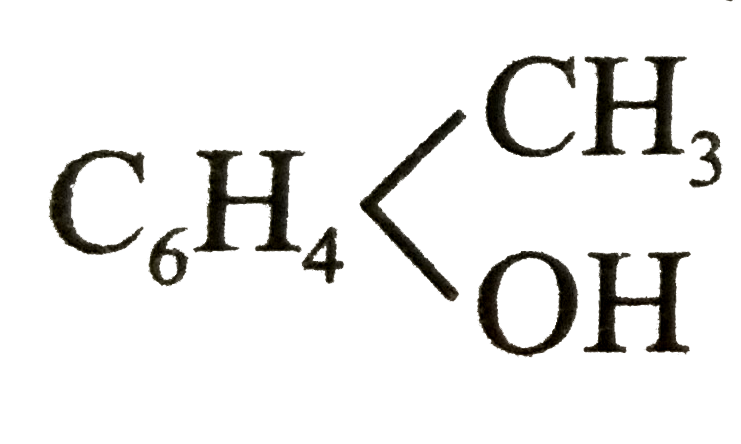 (iii) Since A on bromination forms tribromo derivative so, it is m-cresol i.e. 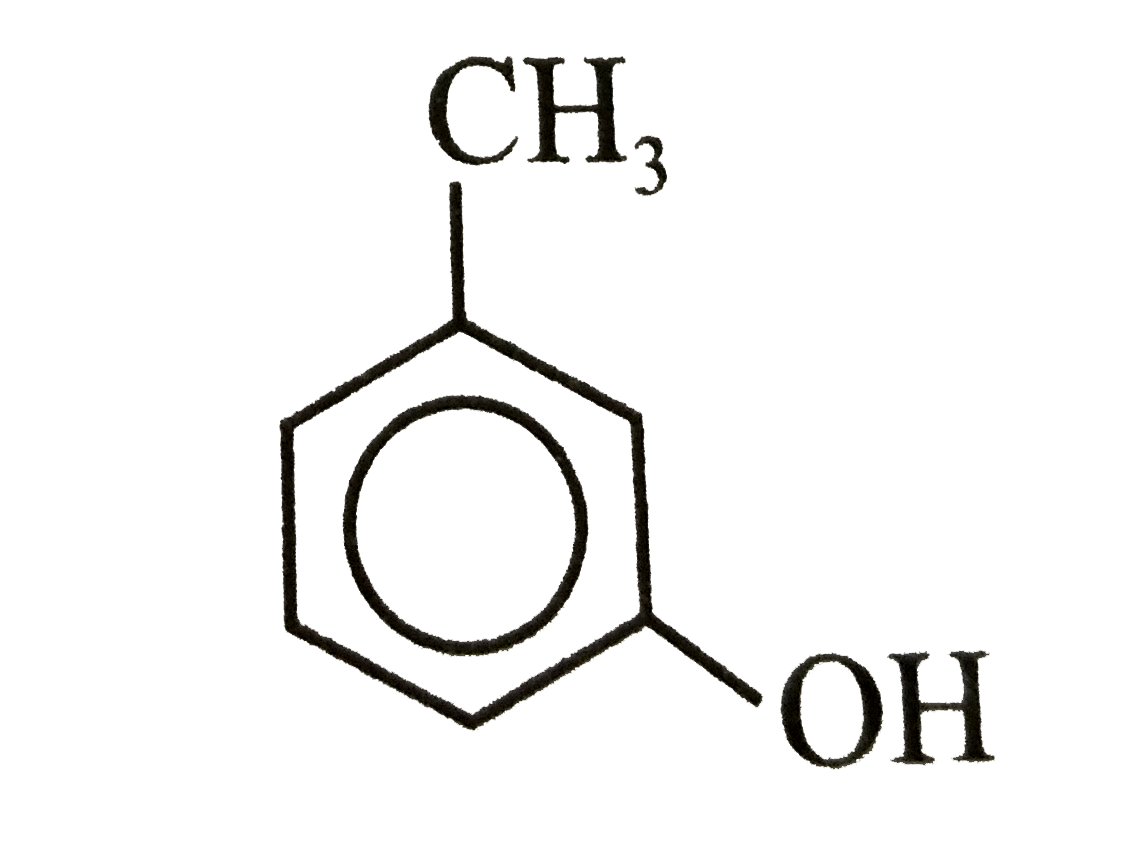 The REACTIONS are: 
|
|
| 90310. |
Which of the following is peroxide? |
|
Answer» `K_2O` |
|
| 90311. |
A compounds is formed by the substitution of two chlorine atoms for two hydrogen atoms in propane. Write the structures of the possible isomers. Give their IUPAC names and identify the one which can exhibit optical isomerism. |
Answer» SOLUTION : This isomer (I) EXHIBITS OPTICAL isomerism since it has a CHIRAL carbon atom. |
|
| 90312. |
A compounds contains 69.5% oxygen and 30.5 % nitrogen and its molecular weight is 92. The formula of that compound is :- |
|
Answer» `N_(2)O` |
|
| 90313. |
A compound Z with molecular formula C_(3)H_(9)N reacts with C_(6)H_(5)SO_(2)Cl to give a solid, insoluble in alkali. Identify Z. |
|
Answer» SOLUTION :Since the amine Z to treatment with `C_(6)H_(5)SO_(2)Cl` gives a product which is insoluble in alkali, therefore, the product does not have a replaceable HYDROGEN on the N-atom. In other words, the amine Z is a `2^(@)` amine. The only `2^(@)` amine having the M.F. `C_(3)H_(9)N` is ethylmethylamine, i.e., the amine (Z) is ethylemthylamine, `CH_(3)CH_(2)NHCH_(3)` `underset("Ethylmethylamine (Z)")(CH_(3)CH_(2)-underset(CH_(3))underset(|)(N)H)+underset("Benzenesulphonyl chloride")(C_(6)H_(5)-underset(O)underset(||)OVERSET(O)overset(||)(S)-Cl)to underset("N-Ethyl-N-methylbenzenesulphonamine")(CH_(3)CH_(2)-underset(H_(3)C)underset(|)(N)-underset(O)underset(||)overset(O)overset(||)(S)-C_(6)H_(5))` |
|
| 90314. |
A compound (X)C_(4)H_(10)O_(7)O, does not give iodoform test but it can change the colouf of acidic dischromate solution, compound (Y) is another isomer of (X), that also does not give iodoform test but it can not chang ethe colour of acidic dichromate solution but it can give immediate turbidity with lucas reagent compound (Z) is another isomer of (X) which can ive positive iodoform test & can change the colour of acidic dihromate solution. X, Y & Z all are alcohols. Q. Which of the following statement is correct about Y. |
|
Answer» It gives RED colour during VICTOR MEYER's test |
|
| 90315. |
A compound (X)C_(4)H_(10)O_(7)O, does not give iodoform test but it can change the colouf of acidic dischromate solution, compound (Y) is another isomer of (X), that also does not give iodoform test but it can not chang ethe colour of acidic dichromate solution but it can give immediate turbidity with lucas reagent compound (Z) is another isomer of (X) which can ive positive iodoform test & can change the colour of acidic dihromate solution. X, Y & Z all are alcohols. Q. Which of the following is not correct about compound Z? |
|
Answer» It is a SECONDARY alcohol. 
|
|
| 90316. |
A compound 'Z' reacts with three moles of CH_(3)I and gives a product which on hydrolysis gives [(CH_(3))_(4)N]^(+)OH^(-). Compound 'Z' is |
|
Answer» `CH_(3)NH_(2)` |
|
| 90317. |
A compound XY crystallizes in BCC lattice with unit cell - edge length of 480 pm , if the radius of Y = is 225 pm , then the radius of X is |
| Answer» Answer :D | |
| 90318. |
A compound (X)C_(4)H_(10)O_(7)O, does not give iodoform test but it can change the colouf of acidic dischromate solution, compound (Y) is another isomer of (X), that also does not give iodoform test but it can not chang ethe colour of acidic dichromate solution but it can give immediate turbidity with lucas reagent compound (Z) is another isomer of (X) which can ive positive iodoform test & can change the colour of acidic dihromate solution. X, Y & Z all are alcohols. Q. Which of the followig can be X? |
|
Answer»
|
|
| 90319. |
A compoundX withmolecularformulaC_(6)H_(10) on oxidation withhot KMnO_(4) giveshexandioic acidXis : |
|
Answer» 2-Hexyne |
|
| 90320. |
A compound X_(2)O_(3) contains 31.58% oxygen by weight . The atomic mass of X is |
|
Answer» `34.66 " g mol"^(-1)` Percentageof OXYGEN by weight = 31.58 Percentageof X byweight = 68.42 LET theatomicmass ofX =x `(2x)/(2x+48) xx 100=68.42` Soatomicmass of XIS 52g `mol^(-1)` |
|
| 90321. |
A compound (X) with molecular formula C_(2)H_(5)ON forms a compound Y when treated with Br_(2) and KOH. Y on beating with chloroform and alcoholic KOH produces a compound Z with very olTensive smell. The compound 'X' is |
|
Answer» an amine `underset(("Offensive smell"))underset("Carbylamine")underset((Z))(CH_(3)NC)` |
|
| 90322. |
A compound X with molecular formula C_3H_8O can be oxidised to a compound Y with the molecular formula C_3H_6O_2. X is most likely to be: |
|
Answer» PRIMARY alcohol |
|
| 90323. |
A compound (X) with a molecular formula C_(4)H_(10)O on oxidation gives (Y) which gives positive iodoform test. (Y) with CH_(3)MgI followed by hydrolysis gives (Z). The (Z) is ……. |
|
Answer» `CH_(3)- (CH_(2))_(4)- OH` |
|
| 90324. |
A compound (X) with a molecualr formula C_(5)H_(10)O gives a positive2, 4-DNP test but a negative Tollens' test. On oxidation it gives a carboxylic acid (Y) witha molecular formulaC_(3)H_(6)O_(2). Potassium salt of (Y) undergoes Kolbe's reaction and gives a hydrocarbon (Z). (X), (Y) and (Z) respectively are |
|
Answer» PENTAN - 3 - one, propanoic acid, butane 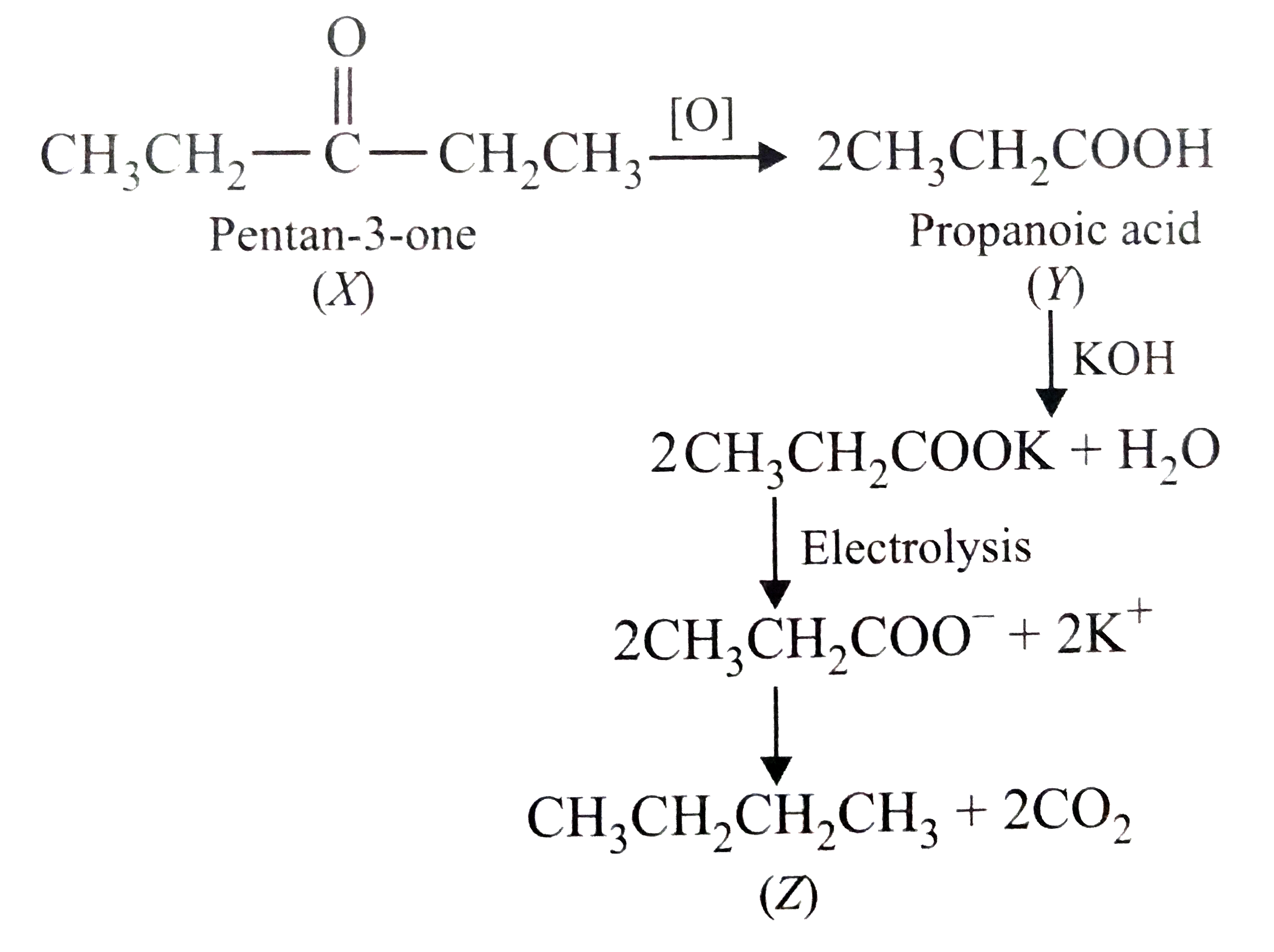
|
|
| 90325. |
A compound 'X' which is a yellowish white powder is prepared by the reaction of white phosphours with excess of dry Cl_(2). Identify 'X' |
| Answer» SOLUTION :`PCl_(5)` | |
| 90326. |
A compound X, when boiled with Na_2CO_3 solution gives glycol as the product. What is X: |
|
Answer» Ethylene |
|
| 90327. |
A compound X on ozonolysis forms two molecules of HCHO. The compound, X is |
|
Answer» `C_2 H_4` |
|
| 90328. |
A compound X on reaction with chloroform and NaOH gives a compound with a very unpleasant odor. X is |
|
Answer» `C_(6)H_(5)CONH_(2)` |
|
| 90329. |
A compound 'X' on ozonolysis form two molecules of HCHO. Compound 'X' is |
|
Answer» `C_2H_4` |
|
| 90330. |
A compound X of formula C_(3)H_(8)O yields a compund C_(3)H_(6)O, on oxidation . To which of the followig classes of compounds could X belong |
| Answer» Answer :A | |
| 90331. |
A compound (X) of molecular formula C_(3)H_(6)O forms bisulphate complex, gives iodoform test but does not reduce Tollens reagent. (X) on reaction with CH_(3)MgBr//H_(3)O^(+) gives a compound (Y) that cannot |
|
Answer» give red COLOUR with Cerium Ammonium Nitrate (CAN) |
|
| 90332. |
A compound X is used as an antiseptic in 0.2% solution and as a disinfectant in 1% solution. Which of the following is X ? |
|
Answer» Phenol |
|
| 90333. |
A compound 'X', molecular formula C_4H_8Br_2 on treatment with zinc in an alcoholic solution, forms an alkene Y. Compounds X and Y respectively are |
|
Answer» 1, 2-dibromobutane and but-2-ene |
|
| 90334. |
A compound X is formed when aceraldehyde condenses with ethyl amine. X on further catalytic hydrogenation (H_(2)//Ni) will yield |
|
Answer» Ethyl methyl amine |
|
| 90335. |
A compound x having molecular formula C_(3)H_(7)NO reacts with Br_(2) in the presence of KOH to giveanother compound y. The compound y reacts with HNO_(2) to form ethanol and N_(2) gas. Identify the compounds x and y and write the reactions involved. |
| Answer» Solution :`UNDERSET("Propanamide"(x))(CH_(3)CH_(2)CONH_(2))+Br_(2)+4KOH to underset("Ethalamine"(y))(CH_(3)CH_(2)NH_(2))OVERSET(HNO_(2))(to)underset("Ethanol")(CH_(3)CH_(2)OH)+N_(2)+H_(2)O` | |
| 90336. |
A compound X has the molecular formula C_7H_7NO. On treatment with Br_2 and KOH, X gives an amine Y. the latter gives carbylamine test. Y upon diazotisation and coupling with phenol gives an azo dye. Thue X is : |
|
Answer» `C_6H_5CONH_2` |
|
| 90337. |
A compound (X) having molecualr formula C_(4)H_(8)O_(2) is hydrolysed by water in presence of an acid to give a carboxylic acid (Y) and an alcohol (Z). (Z) on oxidationwith chromic acid gives (Y), (X), (Y) and (Z) are |
|
Answer» `{:("X","Y","Z"),(CH_(3)COOCH_(3),CH_(3)COOH,CH_(3)OH):}` |
|
| 90338. |
A compound X has the molecular formula C_(7)H_(7)NO. On treatment with Br_(2) and KOH, X gives an amine Y. The latter gives carbylamine test. Y upon diazotisation and coupling with phenol gives an azo dye. Thus X is |
|
Answer» `C_(6)H_(5)CONH_(2)` |
|
| 90339. |
A Compound 'X' has molecular formula C_3H_6Br_2reacts with Nal and acetone to form a substance which turns starch solution blue. 'X' is |
|
Answer» `CH_3CH(BR)CH_2Br` 
|
|
| 90340. |
A compound X has molecular formula C_(2)Cl_(3)OH. It reduces Fehling solution and on oxidation ti gives monocarboxylic acid B. X is |
|
Answer» CHLOROMETHANE |
|
| 90341. |
A compound (X) gives Observation - I: +ve Todoform test Observation - II : One mole of organic compound gives one mole of Agl by Zeisel's method Observation - III : One mole gives 2 moles of CH_(4) with excess of methyl magnesium bromide. Observation - IV: Gives no test for 2,4- DNP and no ppt. with AgNO_(3) The observation-Ill predicts the presence of |
|
Answer» `1 -OCH_(3)` group |
|
| 90342. |
A compound (X) gives Observation - I: +ve Todoform test Observation - II : One mole of organic compound gives one mole of Agl by Zeisel's method Observation - III : One mole gives 2 moles of CH_(4) with excess of methyl magnesium bromide. Observation - IV: Gives no test for 2,4- DNP and no ppt. with AgNO_(3) The observation-II predicts the presence of |
|
Answer» `2 -OCH_(3)` GROUP |
|
| 90343. |
A compound (X) gives Observation - I: +ve Todoform test Observation - II : One mole of organic compound gives one mole of Agl by Zeisel's method Observation - III : One mole gives 2 moles of CH_(4) with excess of methyl magnesium bromide. Observation - IV: Gives no test for 2,4- DNP and no ppt. with AgNO_(3) From observations - I and II it can be predicted that the compound (X) contains |
|
Answer» `-UNDERSET(O)underset(||)C-CH_(3)` group |
|
| 90344. |
A compound (X) gives fruity smell. [X] on hydrolysis gives an acid and alcohol. Acid give violet colour with neutral FeCl_(3) while alcohol give yellow precipitate on boiling with I_(2) and NaOH.(X) can be : [Hint : R - underset(O)underset(||)(C )-OR'overset("Hydrolysis")rarrR-COOH+R'-OH] |
|
Answer»
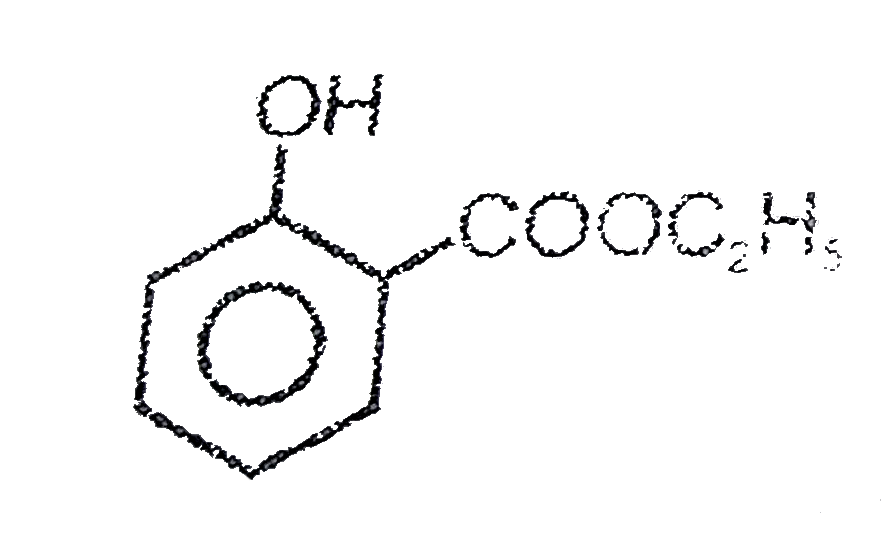 , `OVERSET("Hydrolysis")rarr` , , `OVERSET("Hydrolysis")rarr` ,  , `+CH_(3)-CH_(2)-OH overset(I_(2)//NaOH)rarr CHI_(3)+CH_(3)COOH` yellow PPT , `+CH_(3)-CH_(2)-OH overset(I_(2)//NaOH)rarr CHI_(3)+CH_(3)COOH` yellow PPT
|
|
| 90345. |
A compound [X] discharges bromine water in CCL_(4).The compound neither gives any colour with FeCl_(3) nor effervescences with aq. NaHCO_(3)solution .However ,its hyldrolysate with conc.KOH followed by acidification gives another compoundY which gives colour with FeCl_(3)solution as well aseffervescences of CO_(2) with NaHCO_(3) solution .Compounds X and Y respectively are: |
|
Answer»
|
|
| 90346. |
A compound X gives cyanohydrin with HCN and the cyanohydrin on hydrolysis yields lactic acid. The compound X is |
|
Answer» HCHO |
|
| 90347. |
A compound 'X' containing C, H and O is unreactive towards sodium. It does not add with bromine. It also does not react with Schiff's reagent. On refluxing with an excess of HI, 'X' yields only one oragnic product 'Y'.'Y' on hydrolysisyield a new compound 'Z' which can be converted into 'Y' by reaction with red phosphorus and iodine. the compound 'Z' on oxidation with potassium permanganate gives a carboxylic acid. The equivalent weight of acid is 60. What are the compounds 'X','Y' and 'Z'? Write chemical equations leading to the conversion of 'X' to 'Y'. |
| Answer» Solution :`[(C_(2)H_(5)OC_(2)H_(5)"," C_(2)H_(5)I"," C_(2)H_(5)OH),(C_(2)H_(5)OC_(2)H_(5) + 2HI rarr 2C_(2)H_(5)I + H_(2)O)]` | |
| 90348. |
A compound (X)containg C,H, and O is unreactive towardssodium. It does not add with bromine. It also and excess of Hl, (X) yields only oneorganic product (Y), (Y) on hydrolsis yield s a new compond (Z) whch can be convertedto (Y) by reaction with red phosphours and permangnategivesa carboxlic acid. The equivalanetweight of this acid is 60. What are the compounds (X), teh conversionof (X) to (Y). |
|
Answer» Solution :Sincecompound `(X)` does not react with sodium, so it is neither an acid nor an alchol [`(-OH_)` group absent]. Compound `(X)` does not react with SCHIFF's REAGENT so it is not an aldehyde. Compound `(X)` yieldsonly one product with excess of `HI`, so it may be an ether and the LAST product of givensequence of reactions is an acid with molecular WEIGHT`60`, so the acid is aceticacid `(CH_(3)COOH)` and the ether si diethyl ether. (Becuase acdi is two `C` compound, so ether contains four carbons). 
|
|
| 90349. |
A compound X (C_(5)H_(10)O) reacts with 2,4-DNP but does not give silver mirror test and Iodoform reaction. The possible structure for X is : |
|
Answer» |
|
| 90350. |
A compound 'X' (C_2H_4O)on oxidation gives'Y' (C_2H_4O_2) , 'X' undergoes haloform reaction. On treatment with HCN 'X' form a product 'Z' which on hydrolysis gives2- hydroxy propanoic acid. (i) Write down the structures of 'X' and 'Y' (ii) Name the product when 'X' reacts with dil NaOH. (iii) Write down the equations for the reaction involved. |
Answer» SOLUTION :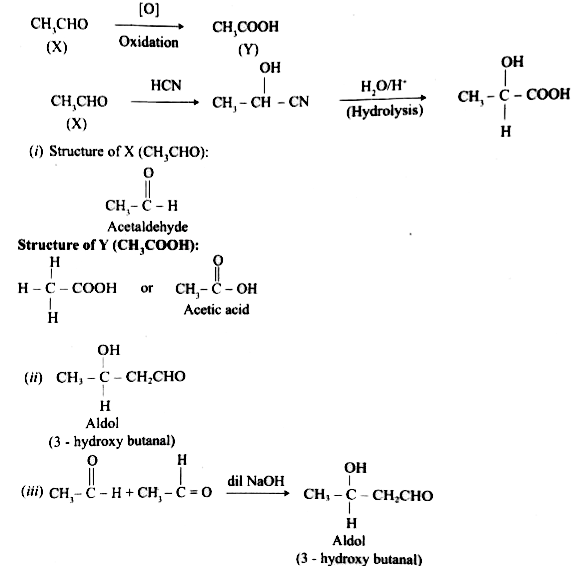
|
|